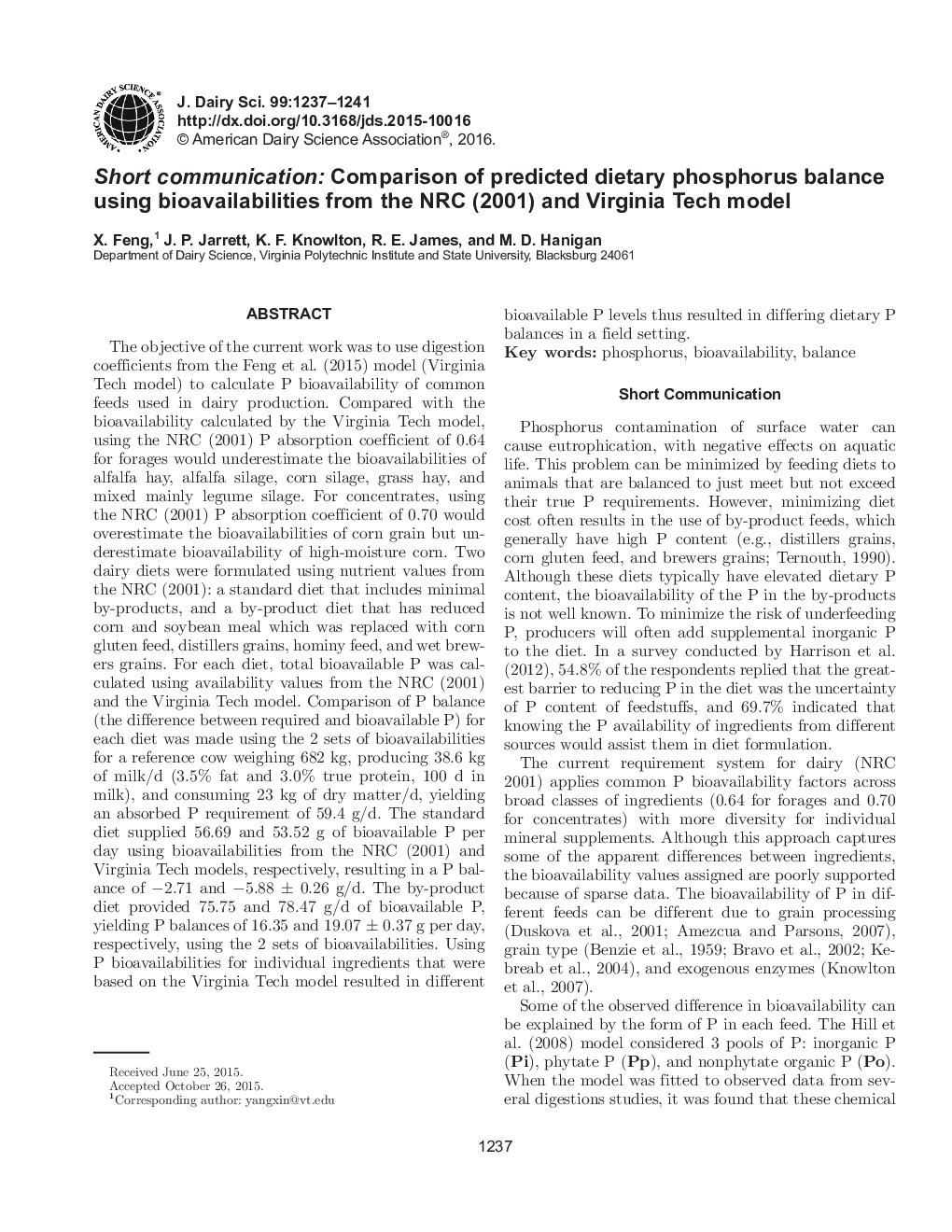| Article ID | Journal | Published Year | Pages | File Type |
|---|---|---|---|---|
| 10973555 | Journal of Dairy Science | 2016 | 5 Pages |
Abstract
The objective of the current work was to use digestion coefficients from the Feng et al. (2015) model (Virginia Tech model) to calculate P bioavailability of common feeds used in dairy production. Compared with the bioavailability calculated by the Virginia Tech model, using the NRC (2001) P absorption coefficient of 0.64 for forages would underestimate the bioavailabilities of alfalfa hay, alfalfa silage, corn silage, grass hay, and mixed mainly legume silage. For concentrates, using the NRC (2001) P absorption coefficient of 0.70 would overestimate the bioavailabilities of corn grain but underestimate bioavailability of high-moisture corn. Two dairy diets were formulated using nutrient values from the NRC (2001): a standard diet that includes minimal by-products, and a by-product diet that has reduced corn and soybean meal which was replaced with corn gluten feed, distillers grains, hominy feed, and wet brewers grains. For each diet, total bioavailable P was calculated using availability values from the NRC (2001) and the Virginia Tech model. Comparison of P balance (the difference between required and bioavailable P) for each diet was made using the 2 sets of bioavailabilities for a reference cow weighing 682 kg, producing 38.6 kg of milk/d (3.5% fat and 3.0% true protein, 100 d in milk), and consuming 23 kg of dry matter/d, yielding an absorbed P requirement of 59.4 g/d. The standard diet supplied 56.69 and 53.52 g of bioavailable P per day using bioavailabilities from the NRC (2001) and Virginia Tech models, respectively, resulting in a P balance of â2.71 and â5.88 ± 0.26 g/d. The by-product diet provided 75.75 and 78.47 g/d of bioavailable P, yielding P balances of 16.35 and 19.07 ± 0.37 g per day, respectively, using the 2 sets of bioavailabilities. Using P bioavailabilities for individual ingredients that were based on the Virginia Tech model resulted in different bioavailable P levels thus resulted in differing dietary P balances in a field setting.
Keywords
Related Topics
Life Sciences
Agricultural and Biological Sciences
Animal Science and Zoology
Authors
X. Feng, J.P. Jarrett, K.F. Knowlton, R.E. James, M.D. Hanigan,
